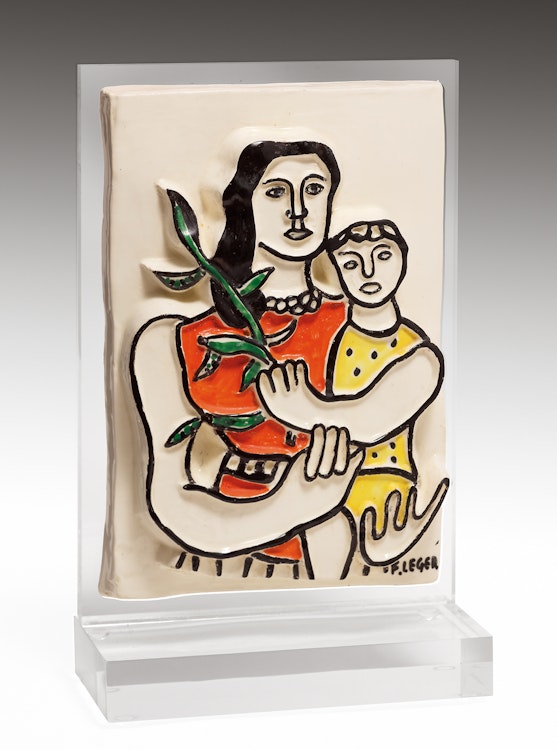Maternité by Fernand Léger

Fernand Léger
Maternité
painted ceramic
signed lower right
11 x 7.5 x 2 in ( 27.9 x 19.1 x 5.1 cm ) ( overall )
Auction Estimate: $12,000.00 - $16,000.00
Price Realized $10,200.00
Sale date: November 27th 2024
Private Collection
Share this item with your friends
Fernand Léger
(1881 - 1955)
Fernand Léger was a multidisciplinary artist known for his works across various mediums, including paint, ceramics, film, and theatre. Born in 1881 in Argentan, France, he began his career as an architectural draftsman. Léger attended classes at the École des Beaux-Arts and also studied at the Académie Julian. His exposure to works by Paul Cézanne, Pablo Picasso, and Georges Braque led him to adop the Cubist style. Léger served in World War I, and his experiences during the war prompted him to become more interested in social justice issues, which is reflected in pieces like "Verdun, The Trench Diggers" (1916). In 1924, he completed his first film, "Ballet mécanique", and opened the Académie de l’Art Moderne at 86 Notre-Dame-Des-Champs in the Montparnasse district. During this period, he developed tubism, which is characterized by architectural elements and human body parts rendered to look like tubes and cylinders.
Upon his move to New York to escape World War II, the Museum of Modern Art (MoMA) presented an exhibition of his work in 1935. After the war ended, he returned to France but continued to travel and produce various projects until his death in 1955. His works can be found in institutions like the Tate Gallery in London, the Centre Georges Pompidou in Paris, the Art Institute of Chicago, and the MoMA in New York.

